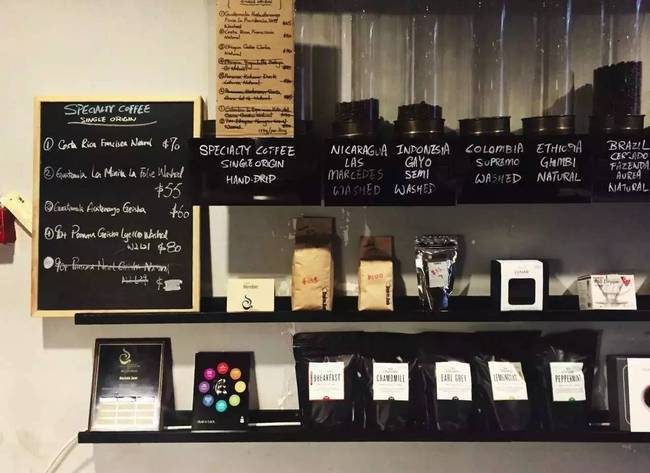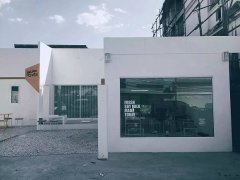Flavor description characteristics of roasting degree of Yega Xuefei Coffee Bean

For professional baristas, please follow the coffee workshop (Wechat official account cafe_style)
Ethiopia is the country where coffee was first discovered. Today, there is still a lot of wild coffee picked and used by farmers in the virgin forest. Ethiopia is a poor country. Drought? A country with constant civil war, but is still the most important coffee producer in terms of coffee quality and output. Ethiopian coffee can be divided into two treatments. Natural washing treatment II. Natural sun treatment. In every producing area in Ethiopia today? Co-op? Even small coffee farms produce coffee beans of the above two treatments at the same time, whether in Taiwan's well-known Yegashev region or Sidamo province, not only in Ethiopia, where coffee is developing most rapidly, but also in different areas where coffee is treated differently, and the same treatment can also be adjusted in different ways to make aroma and taste different, often giving people the wrong impression. Yegashev's sun beans are different from Sidamo's sun beans in aroma, but both retain water-washed coffee beans, fragrant temperature and low temperature. Citric acid is soft and low-key? The flavor consistency is high and the taste wins, while the coffee beans used in the sun have strong and conspicuous aroma. The weakness of citric acid is not obvious? The characteristic of complex and changeable flavor characterized by the aroma of flowers or fruit.
Shallow roasting (City): pick up a handful of Yegashev sun beans and smell the fermented plums and strawberries, which emit the sweetness of baked biscuits when baked. The aroma of strawberry biscuits can be smelled far away after grinding. The coffee is brewed with soft and comfortable strawberry fruit wine, the front end of the bright acidity is to play the aroma to the extreme for a moment to ease, coffee after cooling plum? Strawberry wine fermentation taste began to have a layered sense, Yuyun mouth full of kumquat preserves sweet, properly store coffee beans for 9 days, so that strawberry aroma slowly awakened to become bright and eye-catching, so that the acid becomes soft and slow.
Re-roasting (general C): the end of an explosion 20 murmur40 seconds is the heaviest baking degree of Yegashev sun-dried beans, which will not be scorched because of the great difference in moisture content of sun-dried beans, coffee has the aroma of chocolate Qi Feng cake at this time, the sweetness of tropical fruit pineapple and mango, smooth taste with the creamy shape of caramel. After the cold, Yekashev dried beans, and the sweet and smooth refinement of chocolate syrup made people feel happy.
Yekashev used to be the best producing area of water-washed beans in Ethiopia. In the past year or two, sun-dried beans from misty estates have been very popular in the coffee market, and many estates that used to produce water-washed beans have also been effective in producing sun-washed beans. Yegashev sun beans have developed bolder, stronger and more dazzling coffee beans to attract all coffee fans who like sun beans, breaking through all the limits of aroma again and again.
Kochere is a small producing area located about 25 kilometers southeast of Yegashefi.
The coffee beans harvested come from local coffee farmers, who collect a large number of coffee.
Composed of individual small farmers, the average cultivated area of coffee farmers is about 1 hectare.
The altitude of planting is about 1800-2000 meters, and the main varieties of coffee are Typica and Tibica.
Heirloom (native species) are mixed. Because this producing area has more advanced raw bean water treatment.
Equipment, so there has always been a high level of performance in the field of washing treatment, with honey
It is praised for its clean and sweet complex tone with citrus. The main local production mode
Small coffee farmers will harvest red fruits and send them directly to the washing treatment plant near the cooperative.
Handle it in a unified way. Washing treatment technology was introduced into Ethiopia in the 1970s, and Kochel is now
(Kochere) the raw beans in this producing area are mainly treated by washing. Screening and grading of washing treatment plant
After the red cherry color coffee fruit, the peel is directly peeled, washed and fermented, and then washed with raw beans with shells.
Natural exposure on the scaffolding with a humidity of 12% or less will be sent directly to Ethiopia
Commodity Exchange (ECX) warehouse in Awassa. Cup testing, grading and quantity are usually carried out.
Washed beans are stored in the form of shell beans and will not be shelled until they are exported.
This batch of Kochere is the highest grade rated as G1 by ECX, from the appearance of raw beans,
Consistency, freshness to dry aroma and flavor are all excellent, and the aroma performance is very rich.
With the characteristics of the producing area of Yega Xuefei, it exudes the fragrance of elegant and charming flowers, with floral fragrance.
Bright sweet and sour aromas of citrus, lemon, berries and honey. Jasmine, oranges, caramel,
Grape, vanilla, honey and floral aromas, clean and balanced on the palate, with a long, lively and varied finish.
In recent years, many emerging small producing areas or cooperatives in the Sidamo and Yegashev producing areas of Ethiopia will be sold in the international market under the name of their own cooperatives or farms, which shows confidence in their own coffee. Hope to establish brand and loyalty in the international coffee market, coffee farmers insist on collecting mature coffee beans and strictly handle every process. Both natural washing and natural tanning are outstanding, with an unexpected extremely fragrant aroma and excellent taste. I think this is why Ethiopian coffee is expected by coffee fans every year. For example, the Dutch government-assisted Red Cherry Project (Operation Cherry Red) impressed the world with the magnificent aroma of strawberry cookies in 2008 and Cambedo Manor in 2009, which has been reinforced by sun-dried beans produced in Ethiopia in recent years.
Ethiopian coffee is graded as G1.G2. Water-washed beans G1 belongs to the highest level of water-washed beans, while G3.G4 belongs to the highest level of sun-dried beans G3. There are five grades of raw coffee beans in Ethiopia. The number of defective beans with 300 grams as standard is as follows:
Grade1 0Murray 3
Grade2 4muri 12
Grade3 13Murray 25
Grade4 26Murray 45
Grade5 46muri 90
Yirgacheffe
About Yirgacheffe?
Yega Xuefei grows in the Sidamo producing area in the southwest of Ethiopia. Coffee beans belong to small and medium-sized granules. The color of raw beans is light yellowish green and the bean shape is complete and beautiful. It has a certain representative position in the boutique coffee in East Africa.
Now under the system of ECX, the area of Ye Jia Xuefei is divided into four communities, namely: Yirgachefe, Wenago, Kochere and Genlena abay. The soil here is fertile, with an average altitude of 1800 meters above sea level. It is a high-altitude area with a large temperature difference between day and night. The production mode of each district, coupled with the local unique native tree species coffee garden, makes each batch of coffee beans have different flavor, quite unique and unique.
Yega Chuefei is a very high quality washed Arabica bean, with unique and bright fruit sweet and sour, you can immediately feel the fresh and bright aroma. This very personalized Yejia Chuefei, with its arrogant floral fragrance and citric acid, the rich layers interpret the flavor of coffee just right, and taste like an illusion similar to tea. So many people will also say that Yejia Xuefei doesn't taste like coffee, but rather like a soft and pleasant fruit tea. Can be both elegant and unrestrained, the precise handling between simple and complex, but also described by the Japanese as the queen of coffee.
Originally, Yejia Xuefei was famous for its water washing treatment, but now it has been warmly welcomed by the market because it is rich in sweet berries. Also because of the substantial increase in demand, so the sun production of Yega Chuefei has also increased a lot.
Ethiopia is famous all over the world for its mocha beans in Hara, and the Arabica washed coffee beans produced by ─ Yirgacheffe, a narrow area at a higher altitude in the Sidamo in the south-central part of Ethiopia, are also rated as the best coffee beans in Africa.
The name Yegashev means a single ethnic settlement. The producing area is located in the Sidamo planting area in south-central Ethiopia, at an elevation of more than 2000 Michael Mountain. The Gedegna people live in Ethiopia, which is a small number of washed Arabica coffee beans. After medium baking, it shows a perfect sour fruit taste, with aromas similar to scented tea and lemon peel.
Yejashev inherits the uneven appearance and particle size of mocha beans, but because of the water washing treatment in Sidamo area, the appearance of mocha beans is more beautiful than that of dry soybeans, but it retains the floral aroma of mocha beans and the mellow aroma unique to Yejashev.
From the Eddie Multi-processing Plant (Idido), the Yega Xuefei Sunshine Grade 1 is the highest grade on the market. Yejia Xuefei's grading method is based on sun-dried beans and water-washed beans. The highest level of sun-dried beans is usually in G3 or G4, while most of the washing is in G2, while Adura, the owner of the Idido treatment plant. Bugsy (Abdullah Bagersh) adopted a new treatment method. After the coffee fruit was harvested, he dried it on the scaffolding for 48 hours, and all the coffee beans were turned over by hand, and then hand-picked out the defective title beans. Only then did he successfully create the coffee beans of grade G1 in the sun and the highest grade of water-washed G1 in Yejassefi.
The words Bagersh can be seen on the sacks of raw beans. Bagersh has been passed on to the third generation and is planted in the area where Aricha Yirgacheffe is about 6000 feet / 1800 Michael above sea level, and the Idido processing plant is also the exclusive name of the Bagersh family.
Dry aroma: sweet lemon, citrus, sour berries. When injected with hot water, milk candy, lemon sweet and frankincense, citrus and lingering sweetness are gushed.
Sipping: clean, plum fragrant, sweet and refreshing, with a hint of orange, with citronella after sipping.
Kochere is located in the Gedeo region of southern Ethiopia, under the jurisdiction of this area
The more well-known are Yega Xuefei and Kochere. Because of Yega Xuefei
(Yirgacheffe) the coffee produced has a special flavor, unique style and is widely loved.
Therefore, it has its own style in product classification and has always occupied a place in the global boutique coffee market.
Yirgacheffe, located in Sidama province, is a small town itself.
There are three neighboring small production areas Wenago, Kochere and Gelena Abaya, because of the output
The flavor of coffee is almost the same as that of Yega Chefe, so Kochere
It is also classified into the area of Yega Xuefei. Ethiopia implemented it in November 2009.
The new transaction and classification system, in addition to Yega Xuefei, added Wenago, Kochere,
The three by-product areas of Genlena/Abaya show that the flavor of these three areas is extremely meticulous.
And then subdivide it.
About the misty valley (Misty Valley)?
Growing in a misty valley, this bean has a beautiful name. Many coffee trees are planted in the small town of Yegashafi in Ethiopia's Sidamo province. Instead of the sun treatment used by Sidamo ten years ago, farmers in the misty valley turned to washing coffee beans, which also made Yega Xuefei famous. Now, Yejia Xuefei is not only a place name, but also a familiar pronoun for coffee beans.
According to local elders, although Yega Xuefei in the misty valley is famous for its water washing treatment, it is still dominated by traditional sun treatment. because local residents think that sun treatment can give coffee beans an unspeakable flavor. Because of Yejia Xuefei's fame, Suoguo incorporated the coffee-making ceremony into the feast for foreign guests. They did not care whether the beans were complete and full, but directly roasted the beans on an iron plate. As for the taboo of baking beans, there is no need to ask for more at the moment. Under this traditional and wonderful ceremony, even if the beans have different colors, they can still cook an unforgettable taste.
Important Notice :
前街咖啡 FrontStreet Coffee has moved to new addredd:
FrontStreet Coffee Address: 315,Donghua East Road,GuangZhou
Tel:020 38364473
- Prev

Characteristics of Information Flavor description and processing method in Yejia Fischer producing area
The exchange of professional baristas please pay attention to the coffee workshop (Wechat official account cafe_style) Kochere is a small production area about 25 kilometers southeast of Yega Sheffield. The coffee beans harvested come from locally grown small coffee farmers, which are composed of a large number of small coffee farmers. The average farming area of these small farmers is about 1 hectare, planting altitude.
- Next

Yega Xuefei misty Valley Coffee Bean introduction Flavor description treatment method
Professional barista communication, please follow the coffee workshop (Wechat official account cafe_style) about the misty valley (Misty Valley)? Growing in a misty valley, this bean has a beautiful name. Many coffee trees are planted in the small town of Yegashafi in Ethiopia's Sidamo province. Leaving aside the way Sidamo used sun treatment ten years ago, the farmers in the foggy valley
Related
- Detailed explanation of Jadeite planting Land in Panamanian Jadeite Manor introduction to the grading system of Jadeite competitive bidding, Red bid, Green bid and Rose Summer
- Story of Coffee planting in Brenka region of Costa Rica Stonehenge Manor anaerobic heavy honey treatment of flavor mouth
- What's on the barrel of Blue Mountain Coffee beans?
- Can American coffee also pull flowers? How to use hot American style to pull out a good-looking pattern?
- Can you make a cold extract with coffee beans? What is the right proportion for cold-extracted coffee formula?
- Indonesian PWN Gold Mandrine Coffee Origin Features Flavor How to Chong? Mandolin coffee is American.
- A brief introduction to the flavor characteristics of Brazilian yellow bourbon coffee beans
- What is the effect of different water quality on the flavor of cold-extracted coffee? What kind of water is best for brewing coffee?
- Why do you think of Rose Summer whenever you mention Panamanian coffee?
- Introduction to the characteristics of authentic blue mountain coffee bean producing areas? What is the CIB Coffee Authority in Jamaica?

